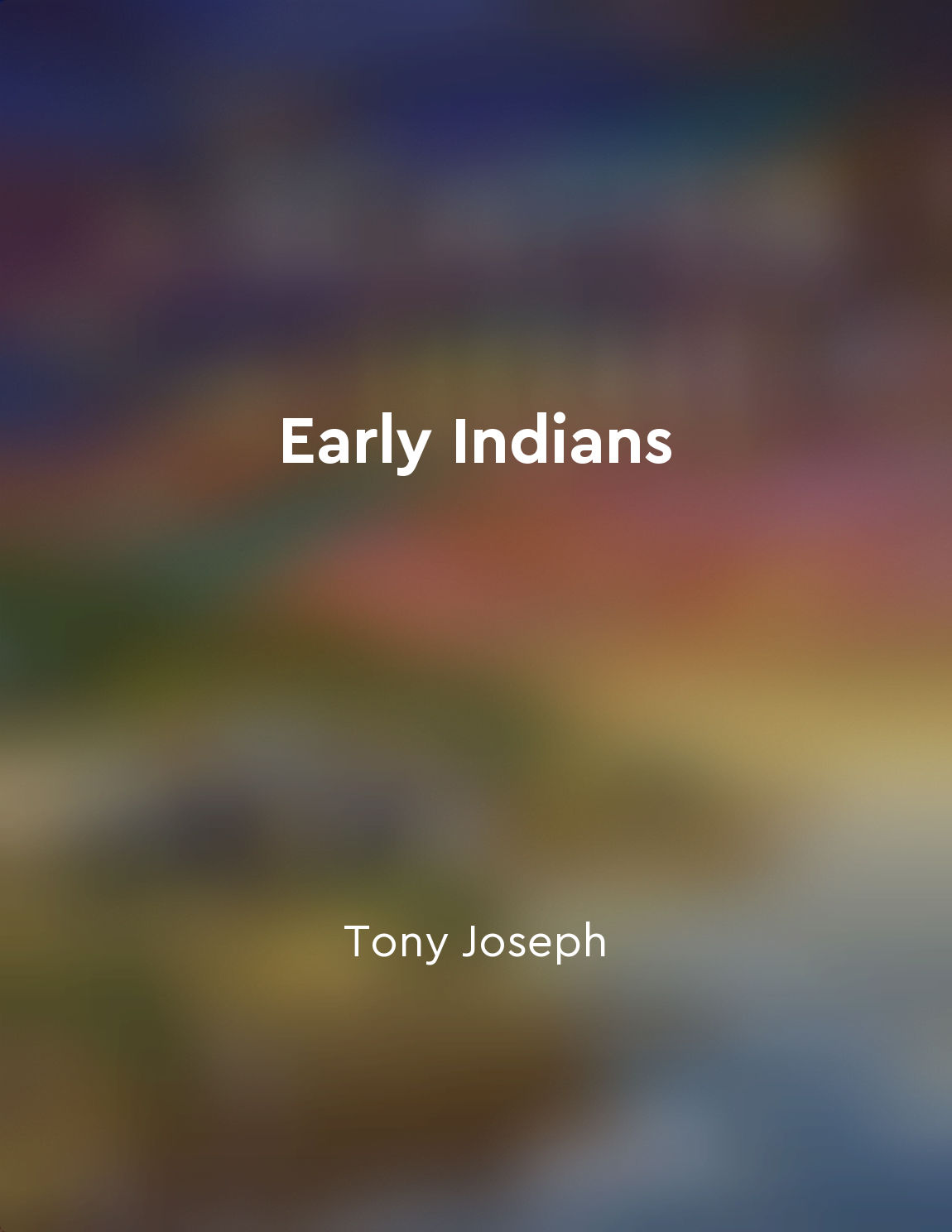Collapse of Harappan civilization led to scattering of population from "summary" of Early Indians by Tony Joseph
The collapse of the Harappan civilization around 1900 BCE was not a singular event that wiped out an entire population all at once. Instead, it was a slow and gradual process that led to the scattering of people in different directions. As the cities and towns of the Indus Valley began to decline, the residents would have had to find new places to live and new ways to sustain themselves. Some of the population may have migrated towards the east, towards regions such as the Ganges plain and the Deccan plateau. Others may have moved towards the south, into present-day Gujarat and Maharashtra. Some might have even ventured west, towards what is now Afghanistan and Iran. This movement of people away from the urban centers of the Harappan civilization would have been driven by a combination of factors such as economic hardships, environmental changes, and possibly even invasions by outside groups. The scattering of the population from the Indus Valley region meant that the once-thriving cities and towns were left abandoned, their buildings crumbling and their streets empty. With no one left to maintain the infrastructure or the trade networks that had sustained the civilization, these urban centers slowly fell into disrepair and were eventually reclaimed by nature. The scattering of the population also meant that the cultural practices and technologies of the Harappan civilization were dispersed across a wider geographical area. As people moved to new regions, they would have taken their knowledge and skills with them, spreading them to different parts of the subcontinent. This diffusion of ideas and practices would have played a role in shaping the diverse cultures and societies that emerged in the centuries following the collapse of the Harappan civilization. In this way, the collapse of the Harappan civilization was not just the end of a particular way of life, but the beginning of a new chapter in the history of the Indian subcontinent. The scattering of the population set the stage for the emergence of new societies and cultures, each drawing on the legacy of the past while also adapting to the challenges of the present.Similar Posts

Indian society evolved through interactions and migrations
The history of Indian society is a rich tapestry woven with diverse threads of interactions and migrations. These interactions ...
The decline affects all aspects of society
The phenomenon of decline is not limited to a single domain or sector of society. Rather, it is a pervasive force that permeate...
South Asia is a region rich in history and culture
South Asia, encompassing countries like India, Pakistan, Bangladesh, Sri Lanka, Nepal, and Bhutan, is a region that boasts a ri...
The Bhakti movement emphasized personal devotion to a deity
The Bhakti movement in India during the medieval period was a significant development in the history of religion. It was charac...
